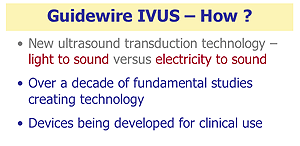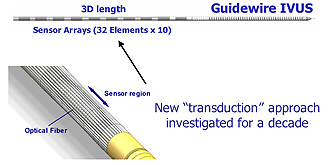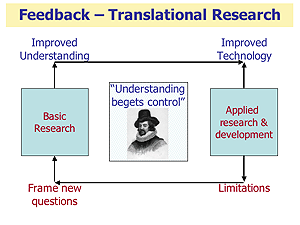|
|
Wonderful question, right? How the hell do you do it? That was framing the question. There was no technology around that could come close to the dimensions because this is, remember, 1/25th the area of what at the time was the world's smallest imaging system. So how do you do it? Well, we created a new technology. It was over a period of a decade, funded by the Navy, funded by the National Institutes of Health, funded by the National Science Foundation, because there were parts that had to do with materials; there was parts that had to do with systems and parts that had to do with the interactions with biological substances.
We created an imaging system now that is fully embedded within the guidewire of this. So it's an IVUS—intravascular ultrasound—but it's totally embedded within this guidewire. To do this was a decade of work, totally inventing a new technology to do that. Why? Because we knew, we were inspired, that if we didn't do this, it was never going to be used by practitioners. This is now actually a cartoon of a device that is in another startup company, and we're hoping that we can finally crack this nut and have a major impact on intravascular ultrasound.
So, again, we invented a new technology, and it turns out this technology now is in a startup company to go after this problem. A bunch of groups now are looking at this as a whole different way to do molecular medicine technology. We have a new model for research by professionals, use-inspired—there's translation into actual practice, framing new questions—and what I'm really interested in hearing the rest of today is that in engineering, clearly now at the high-technology fringe of engineering, this entire process totally drives the profession, the concept of an investigation.
So if you go into Microsoft, if you go into Intel, you go into Medtronic, you go into a major engineering company, every single engineer around will know the concept of an investigation. What it means is usually, in Silicon Valley parlance, that we framed a question, we don't know what's going on, you got two weeks. Go. Tick, tick, tick, tick, tick. Because a Silicon Valley company can't wait two years to find out the answer, but you do it for two, and the result of a lot of investigations are, “Here's what the problems are, we tried a couple things, and here’s where we think you should go for the future.” That process is totally embedded now within the profession.
>
01 02 03 04 05 06 07 08 09 10 11 12 13 14 15 16 17 18 19
|
|




|
